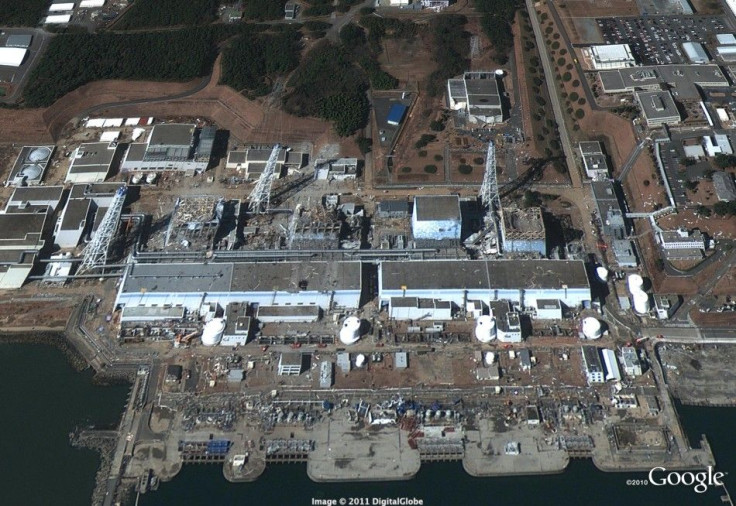Radioactive Contaminants In Seawater Near Fukushima

Tokyo Electric Power Company, the operator of the stricken Fukushima Daiichi nuclear power plant, said it has started monitoring the seawater nearby and found elevated levels of radiation, but that there is as yet no cause for alarm.
TEPCO has published a list of its test results. The samples were taken on March 21 and 22, at locations ranging from 330 meters south of the discharge canals from the damaged reactors to 16 kilometers away.
Measured against regulatory limits, the highest concentrations of any radionuclide were found at a location about two kilometers north of the discharge canals for reactors 3 and 4. Iodine-131, which has a half-life of about eight days, was found at 80.3 times the limit set under Japan's reactor regulations.
At that location TEPCO measured 3.21 becquerels per cubic centimeter, or 0.00321 becquerels per liter. The regulatory limits are 0.00004 becquerels per liter. The legal limit for adult exposure for drinking water is 300 becquerels of iodine per liter.
A becquerel (Bq) is a unit of radioactivity that measures the number of decay events per second, adjusted for the element one is measuring. It is named for the physicist Antoine Henri Becquerel, who discovered radioactivity along with Marie and Pierre Curie. Limits of exposure will differ depending on the element involved.
Other locations varied greatly. Just 330 meters south of the discharge canal the levels of iodine-131 were many times lower, at 1.19 becquerels per cubic centimeter. Similar levels were found 10 kilometers away, where TEPCO measured 1.085 becquerels.
Other radionuclides found were cesium-134 and cesium-137. Both were found to be above the limits at the location 330 meters from the reactor discharge canals, by a factor of 2.5 and 1.7, respectively. Cesium-134 has a half-life of about two years while cesium-137 has one of about 30 years.
Iodine-131 can concentrate in the thyroid gland and cause cancers, but this was found in seawater rather than anything people are likely to drink. While sea creatures can concentrate Iodine-131 as they take in water, the half-life makes it less likely that humans will ingest it in any significant amounts. In addition, the iodine and other radioactive substances are diluted over areas of several miles and millions of cubic meters of water.
Cesium tends to target muscle tissue, though not enough has been released to enter the food chain in large enough amounts to cause concern. Masaharu Hoshi, a specialist in environmental impact assessments at Hiroshima University's Research Institute for Radiation Biology and Medicine told The Christian Science Monitor contamination of seawater was not a problem after Hiroshima and Nagasaki were bombed with atomic weapons, so it is unlikely to be a problem in this case.
Meanwhile, Kyodo news reported Saturday radioactive iodine has been found in tap water in several locations. In Tochigi, north of Tokyo, 77 becquerels of iodine was found per liter of water. Levels were 2.5 becquerels in Gunma, 0.62 becquerels in Saitama, 0.79 becquerels in Chiba, 1.5 becquerels in Tokyo and 0.27 becquerels in Niigata.
The amount of cesium per kilogram of water was 1.6 becquerels in Tochigi and 0.22 in Gunma, against the limit of 200 becquerels set by the Nuclear Safety Commission of Japan.
© Copyright IBTimes 2024. All rights reserved.











